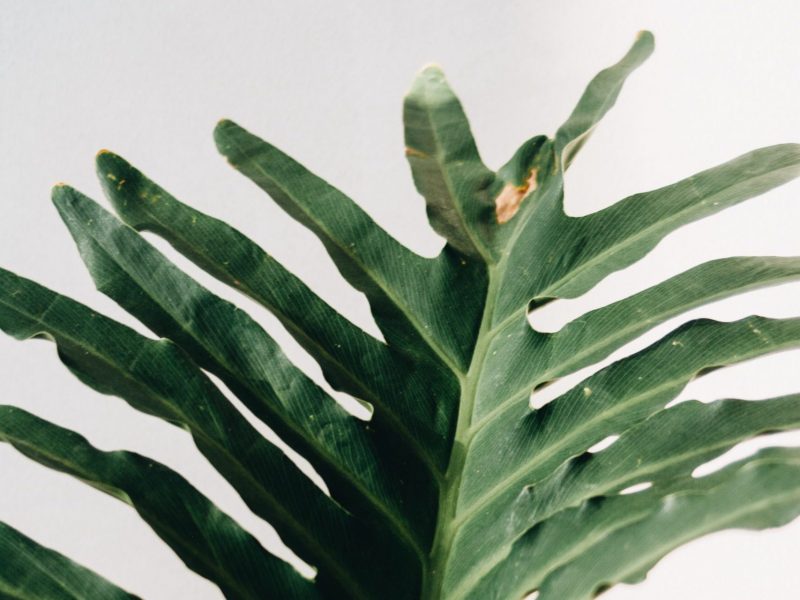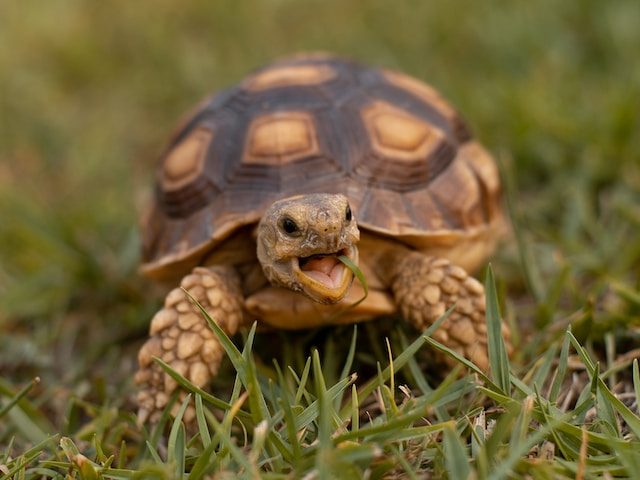
One of the most visually dramatic houseplants out there, the Tree Philodendron has really picked up in popularity and availability over the past few years and we couldn’t be happier about it! But we know as much as any other plant parent just how worrying it can be if you notice issues developing with your Tree Philodendron and you don’t know what is causing them!
In this post, we will go through some of the most common problems that you’ll find with Tree Philodendrons as well as how to treat them and prevent them from occurring again in future. We have also written a guide on how to diagnose and treat brown leaves on your Tree Philodendron.
Causes of yellow leaves on a Tree Philodendron:
Overwatering.
If you notice that your Tree Philodendron is developing yellow patches on its leaves, the problem is commonly too much water (or a lack of drainage). This can really damage the root system of your plant which is why you’ll notice yellow leaves. To check if your Tree Philodendron is struggling due to overwatering, it’s important to check the soil right away and replace it if waterlogged. You also want to trim away any roots that have started to rot so that your Tree Philodendron can begin the recovery process.
To prevent more yellow leaves from being caused by overwatering in future, make sure that the potting mix has time to dry out between waterings. We also recommend checking back 30 minutes after watering and pouring away any excess water that is in the saucer or at the bottom of the planter.
Direct sunlight.
One thing that Tree Philodendron plants can’t handle so well, is long periods of direct sunshine during summer. You won’t really find that direct sunlight causes much of an issue during winter as the sun is a lot weaker, but during the main summer months it can burn the leaves, causing them to turn yellow in patches.
If direct sunshine is causing the yellow leaves on your Tree Philodendron, try to move your plant a little bit further away from the window so that it doesn’t receive any direct sun. Unfortunately, once the leaves have burnt and turned yellow, this is not reversible so we recommend trimming off the worst affected leaves to encourage new healthy growth.
Pests can cause yellow spots on leaves.
If your Tree Philodendron has developed little yellow spots across the leaves, rather than the entire leaf turning solid yellow, then this might be due to pests. They will suck on the leaves, exhausting them and causing them to turn yellow and as the problem progresses, these leaves will eventually fall off!
Take a proper in-depth look at the undersides of the leaves on your Tree Philodendron as this is where they like to live. If you spot pests lurking on your Tree Philodendron isolate your plant to prevent the infestation from spreading throughout any other plants. Then you want to trim off the worst affected leaves, give your Tree Philodendron a wash down in the sink and treat with neem oil.
Natural ageing.
As your Tree Philodendron matures, it can be normal for it to lose a few of its oldest smallest leaves in favour of new bigger growth. These leaves will often turn yellow before falling off your plant. This natural ageing process is normal and you don’t need to worry as long as the rate of yellowing is slow and there aren’t any other issues.
Tree Philodendrons lose leaves for a variety of reasons
Lack of sunlight.
Tree Philodendrons like bright, indirect light and if they spend too long in a shady spot, they may start to drop some of their leaves as they aren’t receiving enough light to keep them alive. You might also need to think about moving your Tree Philodendron around depending on the seasons.
In the winter months, when the sun isn’t as strong (and out for less of the day) it might be best to move your plant closer to the window to maximise as much of the natural sunlight as possible. However, if there isn’t a sunnier spot you can move your Tree Philodendron to, then you might need to invest in an LED grow light to supplement the lack of sunlight. These are also great for propagating young cuttings so overall a good investment for any plant parent.
Cold temperatures.
Another reason why your Tree Philodendron may be losing its leaves is due to consistent exposure to cold air. Cold drafts can also damage your Tree Philodendron’s health causing it to lose leaves, particularly in winter.
Make sure your Tree Philodendron isn’t placed next to a particularly drafty window or door or near an air conditioning vent in summer. You can always pick up a digital thermometer to check the temperature around your Tree Philodendron to see if this is the reason it is losing leaves.
Stress.
It’s not just cold temperatures that can shock your Tree Philodendron but any dramatic or sudden change in its environment can cause stress and shock which can lead to leaf loss. Your Tree Philodendron will also only ever lose a few leaves due to environmental shock so keep an eye on the number and rate of leaves falling off. If the problem persists for a few weeks then you might need to look at other factors.
Natural ageing.
If it’s only the oldest leaves on your Tree Philodendron that are falling off, then this may be natural ageing. This is completely natural so you don’t need to worry. The one thing you do need to keep an eye on though is the rate of ageing. On average your Tree Philodendron should lose 1-2 leaves every 6 months or so, but not more. If your Tree Philodendron is losing more than this then it’s a sign that something isn’t quite right and I would consult the reasons we have listed above to find the cause.
Why is my Tree Philodendron drooping?
Underwatering.
The most common reason Tree Philodendron’s leaves droop down is underwatering and subsequent dry potting mix. A droopy and limp plant is often the first sign of your Tree Philodendron being thirsty so hopefully, it means you have caught the problem early. Check to see if the soil is powdery and dry before watering your plant a little once a day for a week. To solve the issue in the long term, make sure that you don’t leave the soil dry for too long so set reminders or calendar events to ensure a regular watering routine.
Overwatering.
Similarly to underwatering, too much water can actually also make your Tree Philodendron’s leaves droop down. Waterlogged soil can damage the root system, which starves your plant of needed nutrients, moisture and oxygen, causing it to droop. Overwatering can cause some really harmful problems so it’s important you act quickly to stop any permanent damage.
If you suspect overwatering is the cause of your Tree Philodendron’s drooping leaves, then inspect the root system and trim away any rotten or damaged roots. If the potting mix is soggy, replace it with fresh high-quality mix so that your plant can start to recover. Don’t wait for the potting mix to naturally dry out as this will only cause more damage to the roots/plant.
Going forward, make sure to only water your Tree Philodendron when the potting mix has fully dried out. This will help stop your Tree Philodendron from drooping again in future.
Causes of curling leaves on a Tree Philodendron
Temperature extremes.
One of the most common causes of curling leaves on a Tree Philodendron is heat stress. This can be caused by close proximity to cookers, radiators or heating vents so you want to check the placement of your plant as well as use a digital thermometer to check if your plant needs moving. This can also happen if your Tree Philodendron is too close to the window as during summer hotspots can occur, drying out your plant and causing the leaves to curl up.
Low humidity.
Alongside temperature, humidity is another factor that can cause your Tree Philodendron to curl its leaves. They thrive in humid environments and if your home has really dry air, this will also dry out the leaves and cause them to curl up. This is their mechanism to prevent moisture loss from the leaves. Luckily, the curling is reversible if you boost the humidity so we recommend getting into the habit of misting or bathing your plant as well as buying a humidifier if you don’t already have one.
To learn more about how to care for your plant and prevent any further issues from developing, check out our Tree Philodendron care guide.














